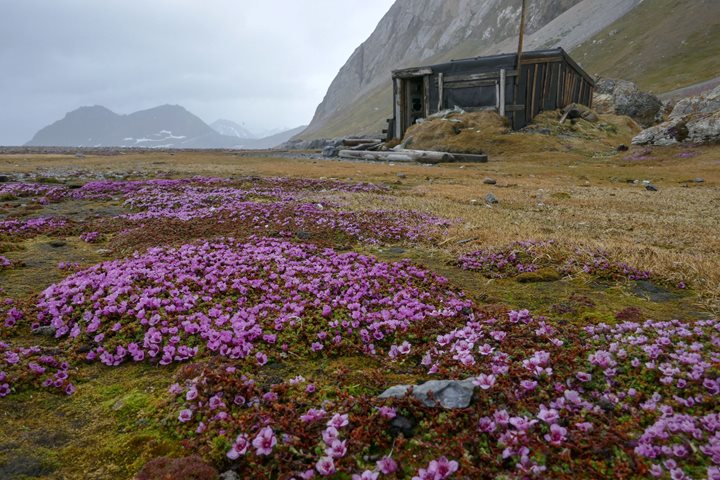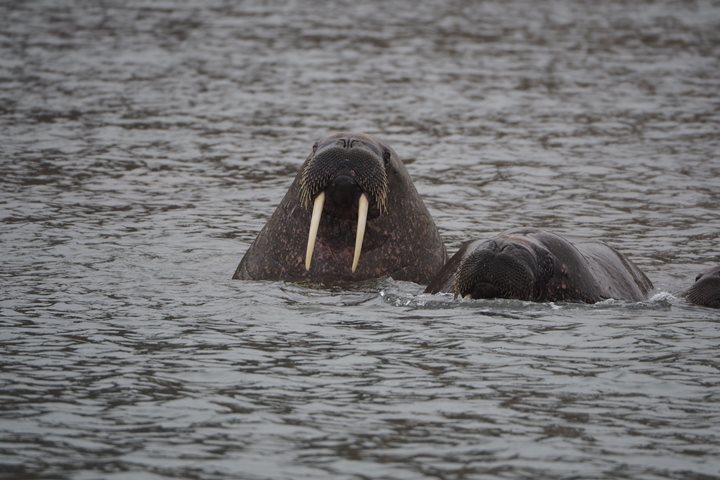Today was our last day aboard National Geographic Explorer. During the night we traveled north to Krossfjorden and the northernmost latitudes on this voyage. The morning was spent in Signehamna, a place with an interesting history from World War II and stunning scenery. Located on the west side of the Lillieöökbreen, Signehamna is a beautiful, well-protected area where we enjoyed kayaking and hiking.
During World War II, the Germans established a marine weather station in Signehamna called Knospe. The station was active in 1941-42 until it was replaced by Nussbaum at approximately the same location. During the spring of 1943, the new weather station was uncovered by the Allies. During the short combat that followed, one of the Germans was killed and the German submarine that was supposed to pick up the crew of the station found a Norwegian boat in Signehamna. The Norwegian ship was quickly sunk, and one of the soldiers drowned. Remains of the weather station can still be seen at the original site.
After lunch, we took a Zodiac cruise to the 14th of July Glacier, named after the National Day of France. This area of Krossfjorden is known for its nesting Atlantic puffins. These birds breed in ledges of steep cliffs just like other auks in Svalbard, with both parents incubating the eggs. This bird has a slow reproduction rate, but once a puffin is fully grown, it has a good chance of reaching 30 years of age.
We were all invited for a polar plunge in the afternoon, and a good number of us took to the freezing-cold waters.







